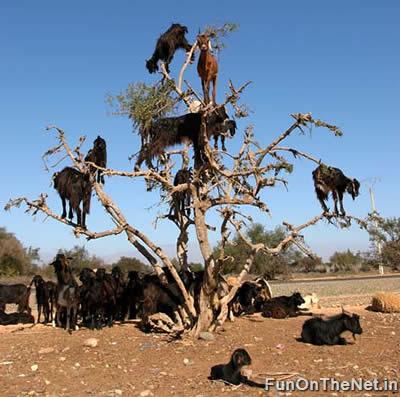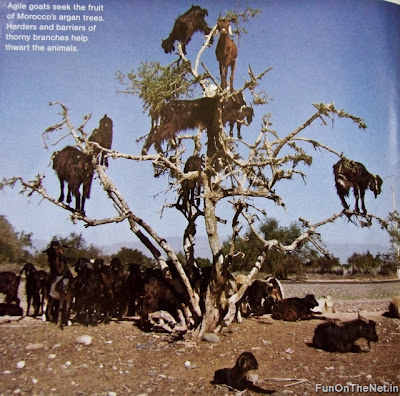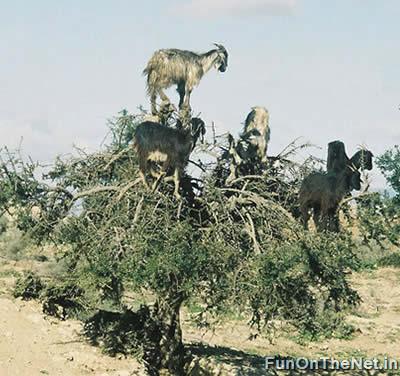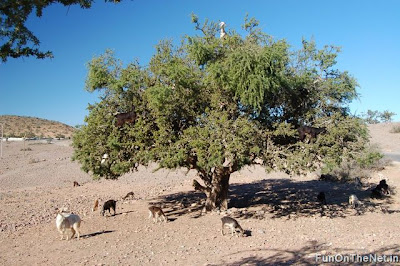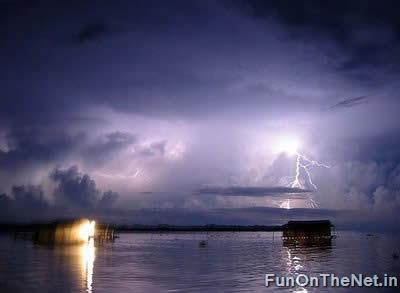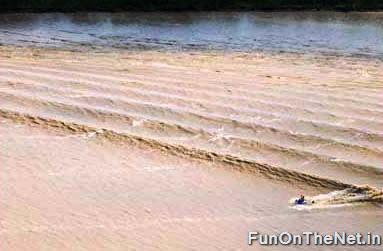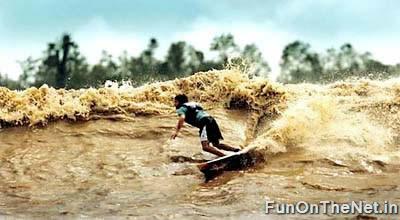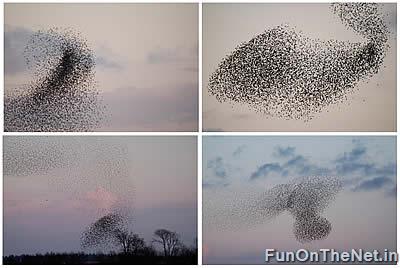"Neeti" <noreply@yahoo.com>, Sunday, February 6, 2011 4:48 AM, Wrote...
7 Unique Natural Phenomena
Here
are 7 Unique natural phenomena that you have probably never seen
before! From Morocco's tree climing goats to honduras's rain of fishes,
Kerala's red rain and many more!

Morocco's Climbing Goats
Goats
on trees are found mostly only in Morocco. The goats climb them because
they like to eat the fruit of the argan tree, which is similar to an
olive. Farmers actually follow the herds of goats as they move from tree
to tree. Not because it is so strange to see goats in trees and the
farmers like to point and stare, but because the fruit of the tree has a
nut inside, which the goats can't digest, so they spit it up or excrete
it which the farmers collect. The nut contains 1-3 kernels, which can
be ground to make argan oil used in cooking and cosmetics. This oil has
been collected by the people of the region for hundreds of years, but
like many wild and useful things these days, the argan tree is slowly
disappearing due to over-harvesting for the tree's wood and overgrazing
by goats.
Venezuela's Everlasting Storm
Venezuela's Everlasting Storm
The
mysterious "Relámpago del Catatumbo" (Catatumbo lightning) is a unique
natural phenomenon in the world. Located on the mouth of the Catatumbo
river at Lake Maracaibo (Venezuela), the phenomenon is a cloud-to-cloud
lightning that forms a voltage arc more than five kilometre high during
140 to 160 nights a year, 10 hours a night, and as many as 280 times an
hour. This almost permanent storm occurs over the marshlands where the
Catatumbo River feeds into Lake Maracaibo and it is considered the
greatest single generator of ozone in the planet, judging from the
intensity of the cloud-to-cloud discharge and great frequency.
Honduras' Rain of Fishes
Honduras' Rain of Fishes
The
Rain of Fish is common in Honduran Folklore. It occurs in the
Departamento de Yoro, between the months of May and July. Witnesses of
this phenomenon state that it begins with a dark cloud in the sky
followed by lightning, thunder, strong winds and heavy rain for 2 to 3
hours. Once the rain has stopped, hundreds of living fish are found on
the ground. People take the fish home to cook and eat them. Since 1998 a
festival known as "Festival de la Lluvia de Peces" (Rain of Fish
Festival) is celebrated every year in the city of Yoro, Departamento de
Yoro, Honduras.
Kerala's (extraterrestrial?) Red Rain
Kerala's (extraterrestrial?) Red Rain
From
25 July to 23 September 2001, red rain sporadically fell on the
southern Indian state of Kerala. Heavy downpours occurred in which the
rain was coloured red, staining clothes with an appearance similar to
that of blood. Yellow, green, and black rain was also reported.
Brazilian's longest wave on the Earth
Brazilian's longest wave on the Earth
Twice
a year, between the months of February and March, the Atlantic Ocean
waters roll up the Amazon river, in Brazil, generating the longest wave
on the Earth. The phenomenon, known as the Pororoca, is caused by the
tides of the Atlantic Ocean wich meet the mouth of the river. This tidal
bore generates waves up to 12 feet high which can last for over half an
hour.
The
wave has become popular with surfers. Since 1999, an annual
championship has been held in São Domingos do Capim. However, surfing
the Pororoca is especially dangerous, as the water contains a
significant amount of debris from the margins of the river (often,
entire trees). The record that we could find for surfing the longest
distance on the Pororoca was set by Picuruta Salazar, a brazilian surfer
who, in 2003, managed to ride the wave for 37 minutes and travel 12.5
kilometers. A surfer's dream: riding an almost never-ending wave.
Denmark's Black Sun
Denmark's Black Sun
During
spring in Denmark, at approximately one half an hour before sunset,
flocks of more than a million European starlings (sturnus vulgaris)
gather from all corners to join in the incredible formations shown
above. This phenomenon is called Black Sun (in Denmark), and can be
witnessed in early spring throughout the marshlands of western Denmark,
from March through to the middle of April. The starlings migrate from
the south and spend the day in the meadows gathering food, sleeping in
the reeds during the night.
Idaho's Fire Rainbow
Idaho's Fire Rainbow

The
atmospheric phenomenon known as a circumhorizon(tal) arc, or "Fire
rainbow", appears when the sun is high in the sky (i.e., higher than 58°
above the horizon), and its light passes through diaphanous,
high-altitude cirrus clouds made up of hexagonal plate crystals.
Sunlight entering the crystals' vertical side faces and leaving through
their bottom faces is refracted (as through a prism) and separated into
an array of visible colors. When the plate crystals in cirrus clouds are
aligned optimally (i.e., with their faces parallel to the ground), the
resulting display is a brilliant spectrum of colors reminiscent of a
rainbow. The example shown above was captured on camera as it hung for
about an hour across a several-hundred square mile area of sky above
northern Idaho (near the Washington border) on 3 June 2006.
